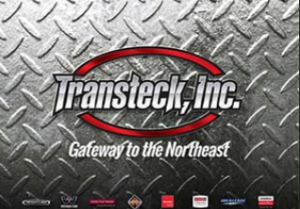Selecting paint for fleet vehicles goes beyond picking a color that matches the brand. While color is important for brand recognition, factors like durability and corrosion resistance are crucial for ensuring both the appearance and longevity of fleet vehicles. Let’s explore what fleet managers should consider when choosing paint for their vehicles.
Why is Quality Paint Important?
Fleet vehicles often serve as moving advertisements, and their appearance can significantly impact a company’s image. A clean, well-maintained truck reflects professionalism, while a rusted or dull vehicle can leave a negative impression.
In industries where trucks are exposed to harsh elements—whether it’s a garbage truck or a delivery vehicle—high-quality paint not only enhances the visual appeal but also protects the vehicle from damage caused by rust and corrosion. Certain vehicles, such as gas trucks, have strict requirements to prevent rust, and quality paint plays a vital role in meeting those standards.
Technological Advancements in Paint
Fleet vehicle paint has evolved from simple single-stage applications to more advanced multi-layer systems. Originally, vehicles received a basic primer and color coat, but now, the introduction of base-coat and clear-coat chemistry has improved both the durability and appearance of commercial vehicle paint. Unlike consumer vehicles, which are designed primarily for aesthetics, commercial vehicles require paint that provides extra physical protection. For fleets exposed to rough conditions, this means opting for paints that offer more than just a good color—it’s about durability and longevity.How Long Does Fleet Paint Last?
The lifespan of a fleet vehicle’s paint can vary widely depending on the vehicle’s use and maintenance. Trucks that are regularly cleaned and maintained may have paint that lasts several years, while vehicles exposed to constant wear and tear might require more frequent touch-ups. For example, fire trucks, which are often cleaned and stored indoors, can maintain their appearance for 8 to 10 years. On the other hand, vehicles like refuse trucks that are exposed to harsh environments daily may need more frequent attention. Paint systems are often categorized into three tiers—good, better, and best—offering varying levels of durability based on a fleet’s specific needs.Protecting and Preserving Fleet Paint
Proper maintenance is key to extending the lifespan of a vehicle’s paint. Regular washing, especially for vehicles operating in areas where salt or corrosive substances are used on roads, is critical for preventing rust and corrosion. Damaged areas should also be promptly repainted to prevent further exposure. Many suppliers offer maintenance programs that provide specific care solutions depending on the needs of the fleet. These programs help keep vehicles looking fresh and reduce the need for costly repainting.Trailer Wraps as an Additional Branding Opportunity
In addition to high-quality paint, fleet managers can take their branding to the next level with trailer wraps. Full or partial wraps provide a mobile advertising platform, transforming trucks into moving billboards. Fleet graphics can include company logos, contact information, or vibrant visuals that represent the brand, making each vehicle a powerful marketing tool on the road. At Transteck Collision Center, our graphics department specializes in custom trailer wraps, signage, and graphics printing using large format printers. Whether it’s a simple logo or a full trailer wrap, these solutions enhance your fleet’s professional appearance and brand visibility.How to Identify Quality Paint
Fleet managers should look for signs that a truck builder or body shop is using high-quality paint. While it may be difficult to tell just by looking at a freshly painted vehicle, reviewing the paint specifications and ensuring the use of corrosion-resistant primers can be a good indicator of quality. Choosing a paint system with advanced technologies, such as those that incorporate epoxies and zinc-rich primers, can significantly enhance a vehicle’s protection against harsh conditions.When Should Fleet Vehicles Be Repainted?
Repainting should be a planned part of the vehicle’s maintenance schedule. Regularly repainting vehicles before the paint degrades significantly can save time and money in the long run. Delaying a repaint can result in increased corrosion and more extensive bodywork, leading to higher costs. It’s important for fleet managers to monitor their vehicles and repaint them at the right time, even if the paint still appears to be in good condition. This proactive approach helps avoid future damage and preserves the vehicle’s resale value.Key Considerations for Choosing Fleet Paint
- Color Requirements
The color needs of a fleet can vary based on branding requirements. Whether a fleet requires simple solid colors or more complex finishes like metallics, the paint system should offer precise color matching to ensure consistency across all vehicles. - Durability and Performance
Fleet vehicles are constantly exposed to various elements, and their paint needs to withstand the wear and tear of daily operations. The paint should retain its gloss, resist chipping, and protect the vehicle from corrosion to maintain a polished, professional appearance. - VOC Regulations
Environmental regulations regarding volatile organic compounds (VOCs) are becoming increasingly stringent. Fleet managers should consider paint systems that comply with low-VOC standards while still providing high-quality finishes. - Warranty and Technical Support
Different paint systems offer various warranty options, which can affect long-term maintenance costs. Fleet owners should also consider the level of technical support available from the supplier, as strong support can help with product application and maintenance. - Comprehensive Solutions
Opting for a paint supplier that offers a full range of products and services simplifies fleet maintenance. Comprehensive solutions that include paint systems and related products, like protective coatings, can ensure the long-term protection and appearance of fleet vehicles.




